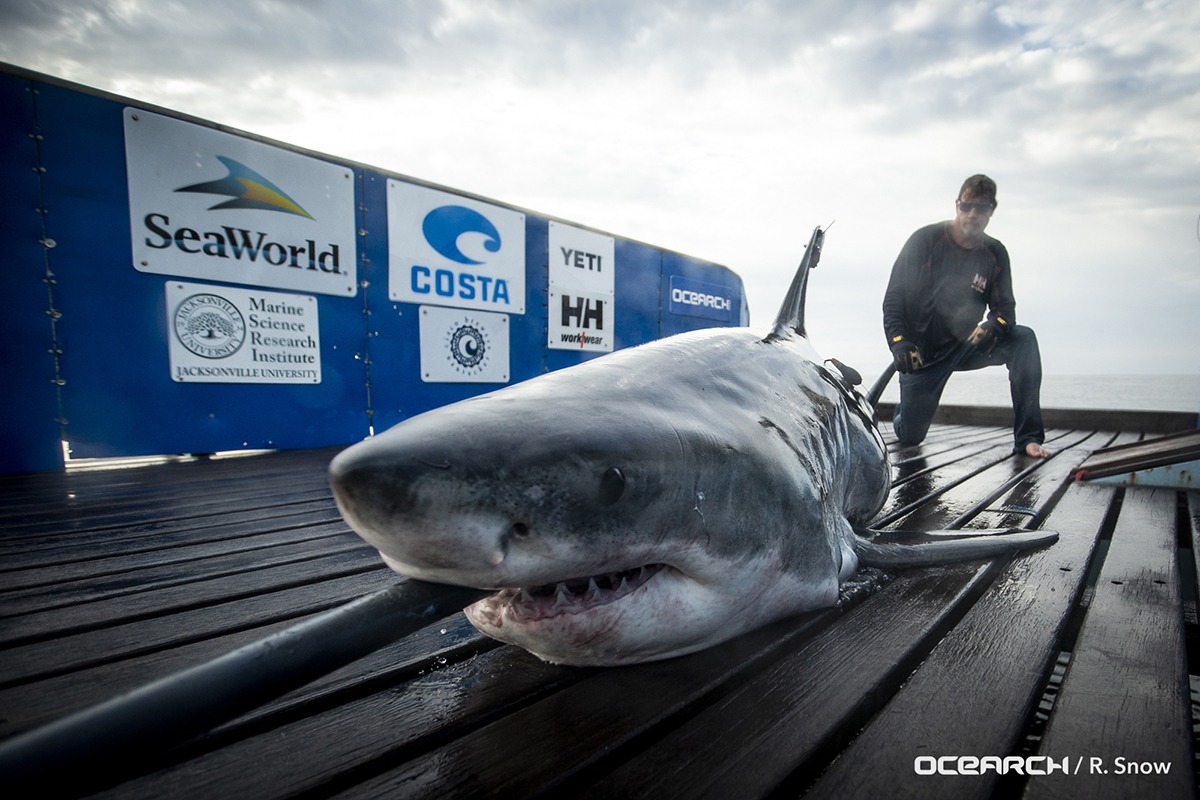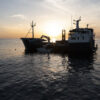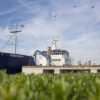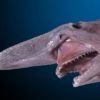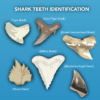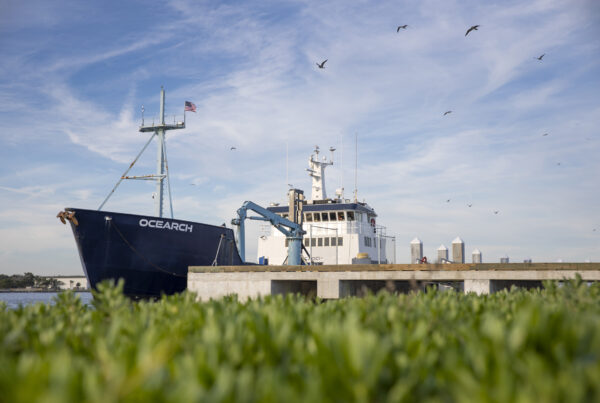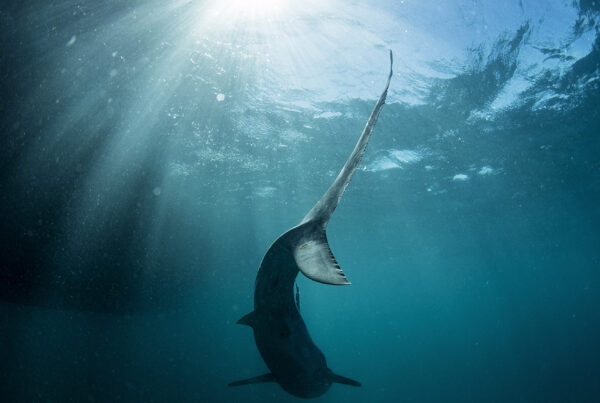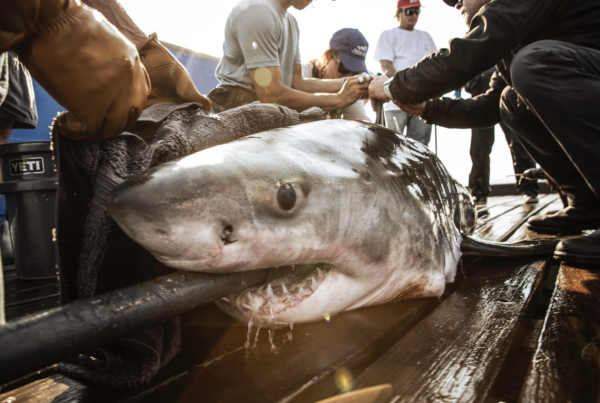The team tags two sharks before the halfway point of Expedition NASFA
OCEARCH and its team of 15 researchers from 11 institutions have successfully equipped two new sharks, including one white shark, with satellite (SPOT) tracking tags off the coast of north Florida. Both animals were tagged during OCEARCH’s Expedition NASFA, its 34th expedition overall and fourth to the Florida Coast.
The team named the first white shark of the expedition Miss May after Mayport, FL, the future permanent home of OCEARCH at a joint Jacksonville University and OCEARCH facility. Miss May is a 10-foot sub-adult who weighs 800 pounds. Additionally, the team also placed a SPOT tag and took samples from an adult tiger shark. The mature 10-foot, 464-pound male was named Lando by OCEARCH’s partner SeaWorld for the people of Orlando.
“…any shark we tag here could be full of surprises and we look forward to seeing where Miss May takes us.”
“This is an incredible start to Expedition NASFA considering we still have plenty more fishing days left,” said Chris Fischer, OCEARCH’s founding chairman and Expedition Leader. “We came ready to grind it out, hoping to tag even one shark so this expedition is already a success. We’re eager to keep up the momentum and keep working hard to add to our sample size.”
Both sharks were tagged on the same day at a site about 40 miles off the coast of Mayport, Florida. It’s only the second time in 34 expeditions that OCEARCH has tagged both a white shark and a tiger shark in the same waters. Samples from the sharks will support 17 separate research studies around the continent.
“Gathering samples for 17 different projects from these few sharks is significant as we strive to maximize the scientific output and efficiency of our efforts with these collaborations,” said Dr. Bryan Franks, Expedition NASFA’s lead scientist and Assistant Professor of Marine Science at Jacksonville University. “We’re speeding up the data gathering process.”
Expedition NASFA is a continuation of OCEARCH’s work in the Northwest Atlantic to understand the life history of white sharks in this region. NASFA stands for Northwest Atlantic Shared Foraging Area and refers to a region stretching from Cape Canaveral, Florida to Cape Hatteras, North Carolina where OCEARCH has tracked many of their satellite-tagged adult and near-adult white sharks during the winter. Eight white sharks were detected in this area at the same time earlier this year.
“It’s essential that we keep working in the NASFA region even though we’ve been here before and know it’s tough,”said Chris Fischer. “This is where we tagged white sharks Hilton and Lydia, and together they exploded our understanding of white sharks in the Northwest Atlantic since they led us to Canada. It just shows any shark we tag here could be full of surprises and we look forward to seeing where Miss May takes us.”
In order to determine foraging patterns, the team will need to not only tag animals (both male and females; adult and subadult), they will need to collect samples from them as well. Tagging and sampling a large number of male and female sharks, with differing life stages, in the same area is a large part of the process of understanding how white sharks are utilizing the region particularly potential foraging areas.
Expedition NASFA will continue through March 2 as the team works its way north before ending up in Savannah, Georgia.
For More Information Please Contact:
Ami Meite
ameite@ocearch.org
435-890-8958

